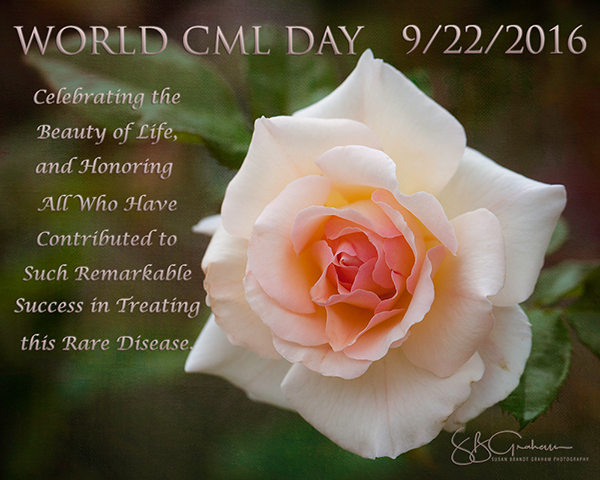World CML Day – A Reason to Celebrate
World CML Day celebrates the beauty of life.

World CML Day. Rose ‘Misty Moonlight’
The rose is ‘Misty Moonlight,’ my registered (2004) large-flowered climber.
CML – chronic myelogenous leukemia – is a blood cancer and a Rare Disease; by definition, less than 200,000 in the US living with it. Today, slightly less than 50,000 in the US live with CML, with around 5,000 diagnosed each year. CML is caused by a translocation of chromosomes 9 and 22, which is how 9/22 came to be recognized as World CML Day. This leukemia is the first cancer to be successfully treated (not cured; that has not happened yet) with targeted therapies, in this case the tyrosine kinase inhibitors, TKI’s for short.
How the Tyrosine Kinase Inhibitors Came to Be
This progress required the work of many people in many seemingly unrelated fields over many years. The Watson-Crick double helix model for the structure of DNA, published in 1953, was the great scientific discovery of the 20th Century.
The first direct link between chromosomal abnormalities to any malignancy came with the discovery of the Philadelphia Chromosome (the 9/22 translocation) in 1960 by Peter Nowell at the University of Pennsylvania School of Medicine and David Hungerford from the Fox Chase Cancer Center’s Institute for Cancer Research.
Janet Rowley in 1972 discovered the Bcr-Abl oncogene produced by the translocation, which produces the tyrosine kinases thought to be responsible for the uncontrolled growth of white blood cells in CML.
In the early 1990’s Dr. Brian Druker began working with Dr. Nicholas Lydon, of what is now Novartis, for the development and testing of tyrosine kinase inhibitors. By the late 1990’s, one in particular, now known as imatinib (Gleevec) showed almost miraculous results for Dr. Druker’s patients, many of whom are still alive after beginning the drug in clinical trials. Novartis did not want to bring the drug to market because they didn’t think there would be enough demand for the drug to be profitable. Dr. Druker led the fight to make the drug available to his patients (and today fights against price gouging). He will forever be a hero to CML patients and their families.
Timeline for development of TKI’s.
PCR Testing
Drug resistance can occur, along with new mutations. A variety of TKI’s have been developed since Gleevec was FDA approved in 2002, helping to address the problem of drug resistance.
Patients are followed closely for evidence of resistance and recurrence through PCR (polymerase chain reaction) monitoring. This process for rapid DNA replication was discovered by Dr. Kary Mullis, and in 1993 he was awarded the Nobel Prize for it. PCR is used for many, many things, and any of you who have had your DNA tested, looking for where your ancestors began and how they migrated, etc., had PCR testing.
I share this video once again, because it proves that science can be fun, and can be presented in a way interested people can understand.
9/22 – World CML Day, my second year not only to observe it but to even know what CML is. I post with respect and gratitude to everyone who has contributed to changing CML from a short-term death sentence to the potential for an essentially normal life, well lived.



Wonderful write up.
Thanks, Tim.
And, once again, thanks to you and Laurie for providing so much support to me and my son! <3